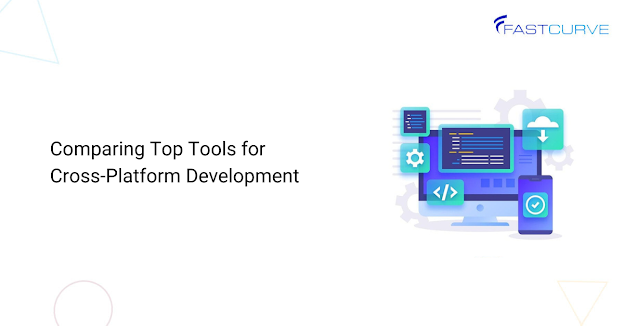Comparing Flutter, React Native & Kotlin for Cross-Platform Apps
In complex mobile app development, developers must choose the correct cross-platform, which can be challenging. Flutter, Kotlin, and React Native are some of the prevalent cross-platform apps.
Each has its followers and features that are helpful for IT operations. Kotlin is apt for native Android app development projects, while Flutter offers advanced UI toolkits, and React Native is equipped with ready-to-use plugins.
In this guide to cross-platform apps, we will discuss the comparison between Flutter, React Native, and Kotlin Multiplatform Mobile (KMM), their benefits, challenges, and how they can add to your mobile app development.
What are cross-platform apps?
Cross-platform apps are basically software applications structured to operate on various platforms or systems with a single codebase. This cross-platform mobile framework helps developers create applications that can run on different devices, ranging from desktops to smartphones and templates, without requiring separate code for the platforms.
The single codebase facilitates faster development, consistent user experience, and access to contemporary native features, allowing diverse developers to create rich and interactive applications.
Flutter vs. React Native vs. Kotlin
Flutter, React Native, and Kotlin are three different cross-platform apps used in the mobile app development framework. The comparison between these three platforms will help you make an informed decision about which platform to choose. Here is a brief description of each platform:
1. Flutter: This cross-platform mobile development was founded by Google in 2017 and uses Dart as a programming language. This open-source UI software development kit allows developers to build a natively constructed mobile, desktop, and web application using a single database. However, the significant characteristics of this app are its fast development cycles, quick iterations, and hot reload feature.
2. Kotlin: Kotlin, being a mobile app development strategy-typed programming language, is very useful for mobile application developers. This open-source single language, combined with Java, is used by over half of Android developers. You can use this majorly to create native Android applications, pricing the contemporary syntax, safety, and compatibility with Java. Therefore, the use of this cross-platform ensures developer productivity and code reliability.
3. React Native: Facebook created this open-source infrastructure to help React Native app developers create native apps utilizing React and Javascript. The most important and beneficial feature of these React mobile apps is that they develop apps suitable for web and desktop operations. This uses a component-based architecture, facilitating reusable and modular code. In addition, it provides access to the vast ecosystem of third-party plugins and libraries.
Advantages of Flutter vs. React Native vs. Kotlin
All these cross-platform apps have their own advantages that help you develop an optimized and responsive mobile app for your business. So, here are some of the advantages of all three platforms:
Advantages of Flutter framework:
1. As discussed earlier, Flutter mobile development helps developers write code once and then deploy it across platforms.
2. The hot reload feature of these secure mobile apps helps Flutter mobile developers view the changes instantly during the development process.
3. Flutter app also compiles the native machine code, offering smooth animations and near-native performance.
4. Majorly, it has strong community support and will get the same in the future.
Benefits of React Native:
1. It also facilitates cross-platform operations and hot reloading and has a big community and support.
2. React native app development delivers real-native performance consolidated to the native code, offering a smooth user experience.
3. The component-based infrastructure certainly helps create modular and reusable UI constituents for code scalability and maintenance.
Advantages of Kotlin:
1. The concise syntax of the Kotlin platform decreases the boilerplate code for the clean and readable codebase.
2. The type stem of Kotlin mobile development frameworks prevents null pointer exceptions to improve the code's reliability.
3. The coroutines simplify the unaligned programming and make writing and maintaining the asynchronous codes accessible.
4. These cross-platform app developments consist of various modern language features like data classes, extension functions, and lambda expressions to improve code expressiveness.
Disadvantages of Flutter vs. React, Native vs. Kotlin
Along with several advantages, there are many disadvantages of these platforms that you must be aware of to find potential IT service solutions. Moreover, the following are the disadvantages of all three cross-platform apps:
Disadvantages of flutter:
1. The large app size of the Flutter platform is a larger file size than the native apps, which is quite disadvantageous for the devices to accommodate.
2. Maintaining the performance across complex apps with high-quality graphics requires sufficient resources and effort for these cross-platform app development frameworks.
3. Lastly, some platform-specific regions need additional plugins.
Challenges of React Native:
1. Complex and computation-centric tasks can experience severe bottlenecks.
2. React native mobile app development also has limited mobile app accessibility to certain native APIs.
4. Some of the features and functionalities need platform-specific code, increasing the Ionic mobile development process's complexity.
Disadvantages of Kotlin:
1. The compilation time of Kotlin apps is slower than Java, mainly for larger projects.
2. Finally, Kotlin's tooling ecosystem is still maturing, and it may encounter several performance bottlenecks.
Cross-platform apps are essential for mobile app development. You can use any of the cross platforms as per your requirements. Flutter, reach-native, and kotlin are the three main characters in the IT industry for providing cross-platform services.
Understand the benefits and disadvantages, analyze their features, and then decide which cross-platform app to adopt for your business websites.
Fastcurve provides services for cloud-computing platforms for app development. Their services include practical solutions for developers to reach various platforms effectively. Their AWS partnerships promote easy storage access to confidential data.



Comments
Post a Comment